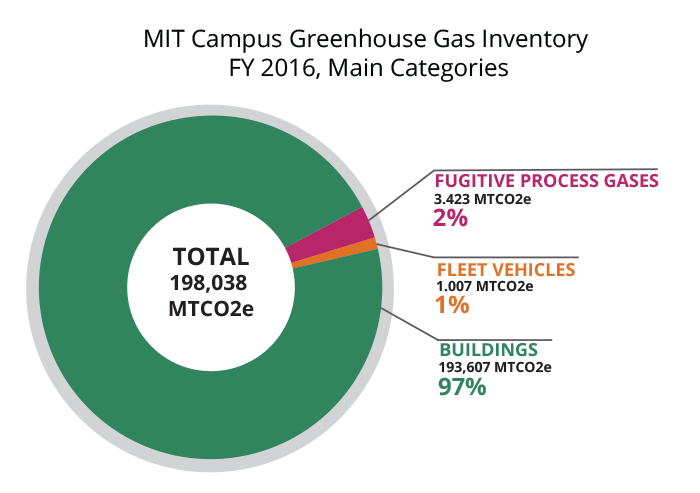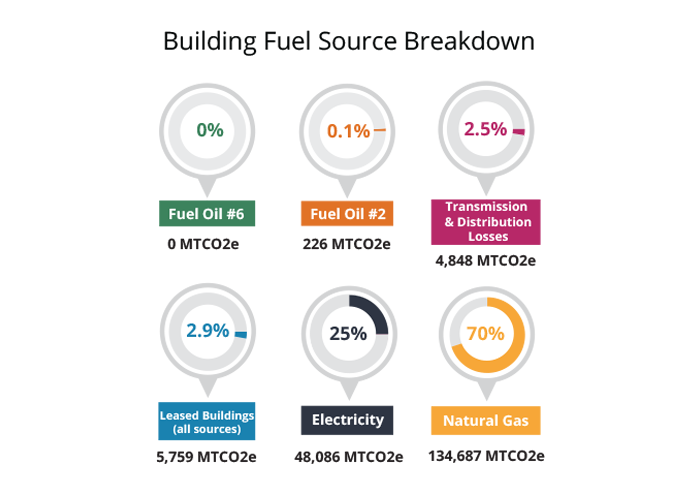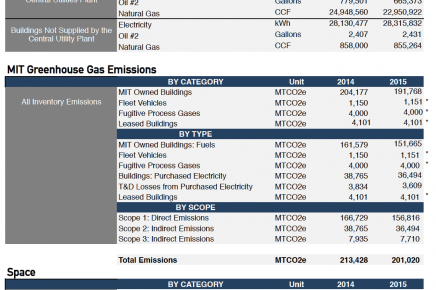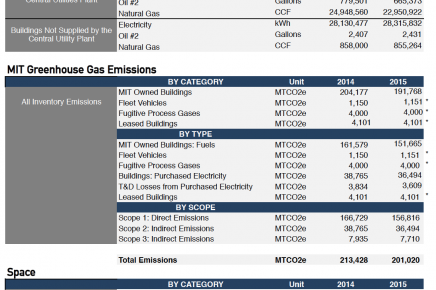Moving from plan to action
Recap for 2016
After establishing its first campus-wide greenhouse gas reduction goal in 2015, MIT continued to measure its emissions while implementing reduction strategies, in pursuit of significantly lowering its carbon impact over time. For fiscal year 2016, MIT measured its greenhouse gas emissions from three areas (as it did in 2014 and 2015): owned & leased academic buildings, fugitive gases, and campus vehicles. Read the 2016 MIT News story here.
Since 2014 – MIT’s baseline year for its 32 percent reduction goal – total greenhouse gas emissions have declined, as the campus strives for carbon neutrality. Between FY2014 and FY2016, the campus achieved a 7 percent reduction in overall emissions: from 213,428 MTCO2e in FY2014 to 198,038 MTCO2e in FY2016. For FY2016, reductions in MIT’s own building emissions accounted for the vast majority of the total GHG reduced, followed by reductions in fugitive gases and fleet vehicle emissions. Ninety-seven percent of the Institute's emissions were associated with the operation of labs, offices, and other building facilities across campus. Fugitive gas emissions and campus vehicle use comprised two and one percent of campus emissions, respectively.

Reduction strategies
MIT reduced its GHG emissions between FY2014 and FY2016 through several strategies, including investments in energy efficiency, use of cleaner fuels, and improvements in grid-purchased electricity. Successful energy efficiency strategies included investments in new construction and renovation, lighting, building retro- and monitoring based-commissioning, mechanical system upgrades, and utility distribution system insulation.
Investments in energy efficiency continued to have a strong impact on the reduction of emissions. In FY2016 alone, MIT invested over $3 million in energy efficiency measures through its Efficiency Forward program, achieving an estimated 7,344,500 kWh savings of electricity and 700,000 therms of heating and cooling energy, generating an anticipated annual savings of over $1.5 million.
Looking forward, MIT recognizes that investing in renewable energy by deploying additional renewable energy systems on campus and enabling off-site renewable energy production is a key component of our plan. The Institute recently formed an alliance for the development of a 60 megawatt solar photovoltaic farm in North Carolina that led to a long-term power purchase agreement. MIT will purchase solar energy equivalent to 40 percent of its current electricity use, which will neutralize emissions by 17 percent.

GHG Inventory Overview and Data





